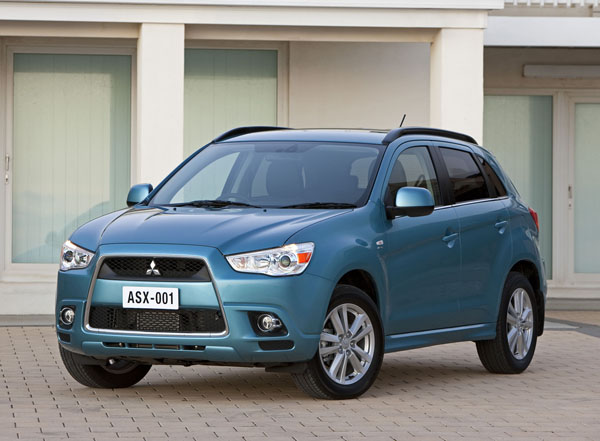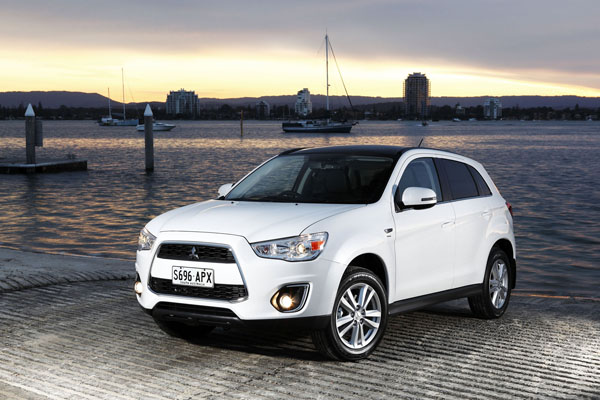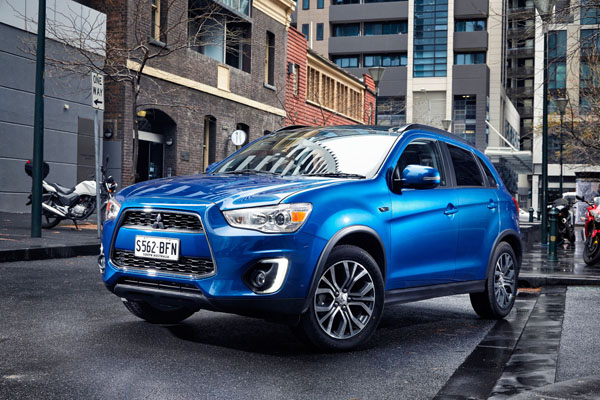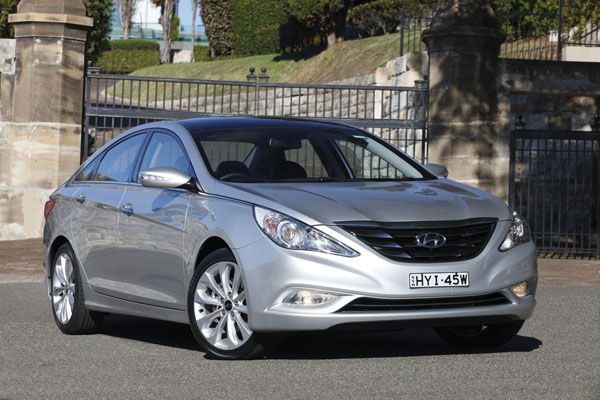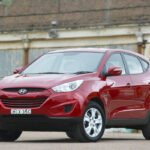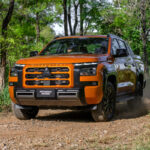By EWAN KENNEDY
CAPTION: A.
B.
C. 2015 Mitsubishi ASX
BODY COPY
Mitsubishi has long been a major player in the Australian 4WD and SUV sales race. Beginning with the ground-breaking Pajero almost 40 years ago when it was the first affordable 4WD designed with comfort, not just off-road ability, in mind.
Though Pajero was, and still is, a success the Japanese giant dabbled in the small SUV field in Australia in various ways for many years without a huge amount of success – until it began to import the Mitsubishi ASX in January 2010.
The subject of this weeks used-car review, the ASX is aimed more at on-road use than tackling the Aussie bush, but can be used on dirt roads, forest trails and the like. That’s if you get one with all-wheel-drive, the two-wheel-drive (front wheels) should stick to the hard stuff.
Although it’s based on the same platform as the Mitsubishi Outlander SUV the ASX has shorter overhangs and a more stylish look. It began with the so-called jet-fighter grille, but that shape wasn’t particularly well received, so in August 2012 it received a major facelift with softer looks. Another facelift in January 2015 gives it a slightly different appliance.
The ASX can carry four adults with some sharing of legroom necessary if all are tall. As a small family SUV it works nicely. The boot is a good size with a volume of 426 litres when the rear seatback is upright and 1193 litres with the seatbacks folded.
The Mitsubishi ASX (for Active Sports Crossover) and not to be confused with the Australian Stock Exchange! (also tagged ASX) is easy to drive and while not sporting it handles normal driving ably. Ride comfort is good and the suppression of noise, vibration and harshness (NVH) works well and was further improved with the 2012 makeover.
Mitsubishi ASX comes with the choice of two engines, a 2.0-litre petrol unit and a sophisticated 1.8-litre direct-injection turbo-diesel. The diesel is as good as any of those found in current generation European units and reflects Mitsubishi’s expertise in the truck business.
However, models are seriously limited in what you can opt for: the front-wheel drive Mitsubishi ASX has the option of either five-speed manual or CVT automatic. The 4WD petrol is only available with CVT while the diesel only comes with six-speed manual.
With the 2012 upgrade of the ASX the settings of the CVT were modified to make it sound and feel a little more like a conventional automatic. This makes it slightly less efficient, but pleasing potential owners generally takes priority over climate change.
Though it has been many years since Mitsubishi built cars in Australia it’s still well represented, with plenty of dealers in the metro areas and a fair smattering in country cities and towns.
Spare parts prices are generally reasonable and we have heard of no real holdups in delivery.
Insurance costs are pretty reasonable as most companies regards the ASX as a family hatch with no sporting overtones.
Mitsubishi ASX has the added assurance of Mitsubishi’s five-year / 130,000-km warranty. Used cars may carry the balance of the warranty, but check with dealers in case it no longer meets all requirements.
WHAT TO LOOK FOR
Mitsubishi ASX, and the Outlander on which it is based, have been around for long enough for all bugs to be exterminated. It’s still wise to have a professional inspection, after you have done initial checks to the best of your ability.
It’s unlikely an ASX will ever have been off-road, but if you suspect one has it’s perhaps best to give it a miss and opt for one of the ninety-something percent that have always bee on sealed surfaces.
Signs of off-road use are scratches on the paint of the bumper corners and on the doors. These can perhaps be buffed out, but unless the ASX is cheap why bother?
Underfloor damage to the powertrain or the body itself is a real no-no.
Check the engine starts easily, early morning when it’s stone cold is ideal. The diesel won’t kick over as quickly as the petrol but shouldn’t lag by too much.
Look over the seats for signs of hard wear, particularly in the back. Similarly look for rough treatment on the boot sides and carpet.
If you haven’t experienced a CVT automatic transmission before it may feel and sound a bit odd. Stick with it, ideally for at least half an hour to accustom yourself to its operation. Basically it’s changing gears all the time to keep the engine in the most efficient range.
HOW MUCH?
Expect to pay from $7000 to $11,000 for a 2010 Mitsubishi ASX 2WD; $11,000 to $17,000 for a 2011 Aspire 4WD; $13,000 to $19,000 for a 2012 Aspire 4WD or a 2013 Aspire 2WD; $15,000 to $22,000 for a 2013 Aspire 4WD; $18,000 to $24,000 for a 2014 Aspire diesel; and $20,000 to $27,000 for a 2015 XLS.
CAR BUYING TIP
If buying a popular vehicle take you time to shop around carefully between the many that are on sale. There may just be a real gem waiting for you.




